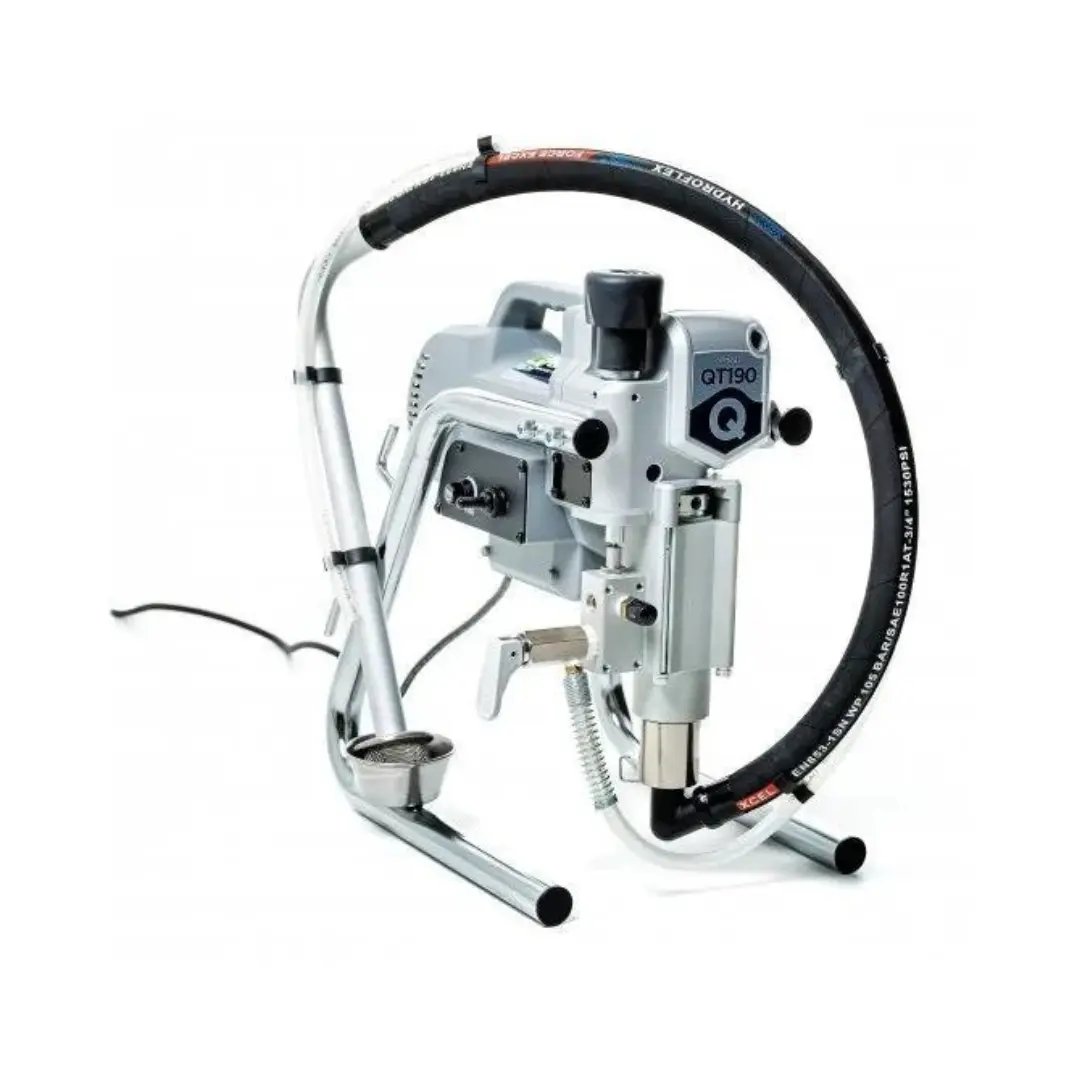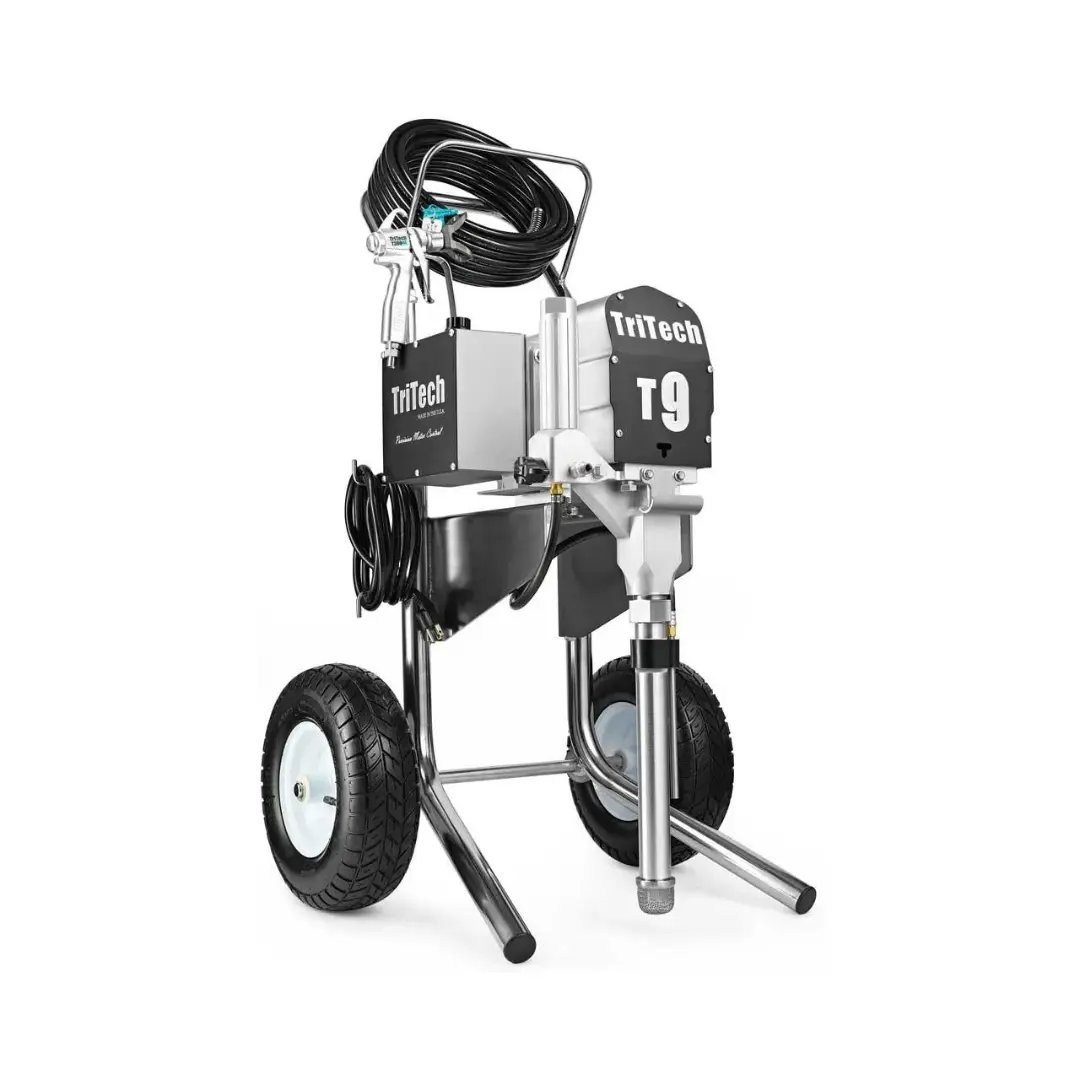Paint Spray Machines were previously considered as a choice for the professional decorator only however with a variety of machines on the market there are options available for the amateur DIY-er too. At CES we offer Paint Spray Machines to hire or purchase as well as a range of parts and accessories for the machines. If you’re new to paint spraying, take a look at our guide covering all you need to know about these machines.
What Is A Paint Sprayer?
Airless Paint Spray machines are a popular choice for both interior and exterior paint work. They are electric machines that apply an even and smooth coat of paint to a range of surfaces. Airless machines pump paint at a very high pressure through a spray gun to cover a vast area making it a quick and efficient method for painting. HVLP (high volume, low pressure) Paint Machines work at a lower pressure and are ideal for details such as interior woodwork.
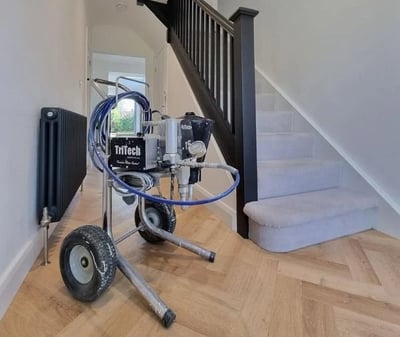
How Does A Paint Sprayer Work?
Airless paint sprayers work by atomising paint using high pressure to form a mist that quickly covers a surface in the desired paint finish. The machines are designed with a suction pump that forces the paint up the hose and out the spray gun. The paint passes through a tiny hole/orifice at a high pressure of around 150-250bar which atomises the paint creating a fine spray of exceptionally small droplets which create the even, uniform paint finish. The spray tip is an integral element to the paint spray machine as not only is this the point where the paint atomises but it is this part that determines the amount of paint that leaves the gun as well as the width of the fan pattern. The combination of tip size and pressure controls the material flow rate.
Selecting Your Spray Tip
Spray tips are available to spray a whole array of coatings including oil-based enamels, clear acrylics, latex and polyurethane to name but a few. Depending on your spray tip, you can carry out precision work or complete rapid large surface coverage. Essentially the spray tip regulates how much paint is projected from the gun as well as how wide the fan pattern will be. Through your tip choice you are controlling the paint flow, paint wastage and project cost.
What Does The Spray Tip Number Mean?
Once you have selected your paint and looked at the spray guidance/specification sheet, you will need to match the tip size with the fan width to find your spray tip number. As a general rule of thumb, the lighter the coating the smaller the spray tip you need whereas heavier coatings require a larger tip.
Tips will be marked with a 3-digit number. The first number (when multiplied by 2) indicates how wide the fan pattern is when sprayed from 12” from the surface. The second two numbers represent the orifice size in thousandths of an inch, essentially telling you how much paint will leave the gun.
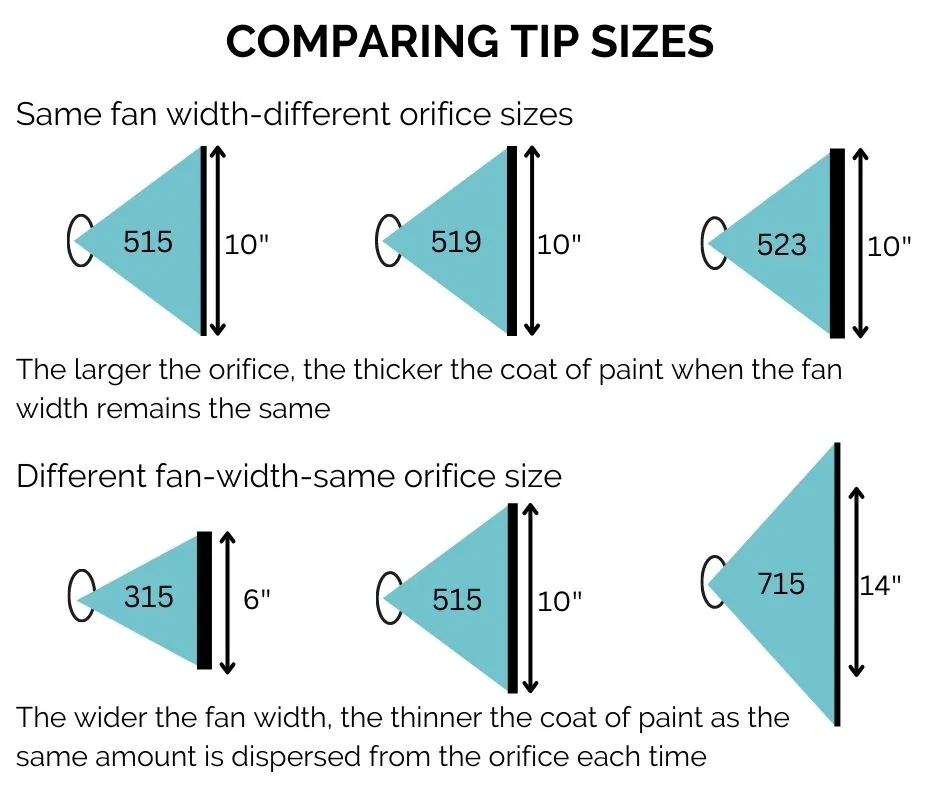
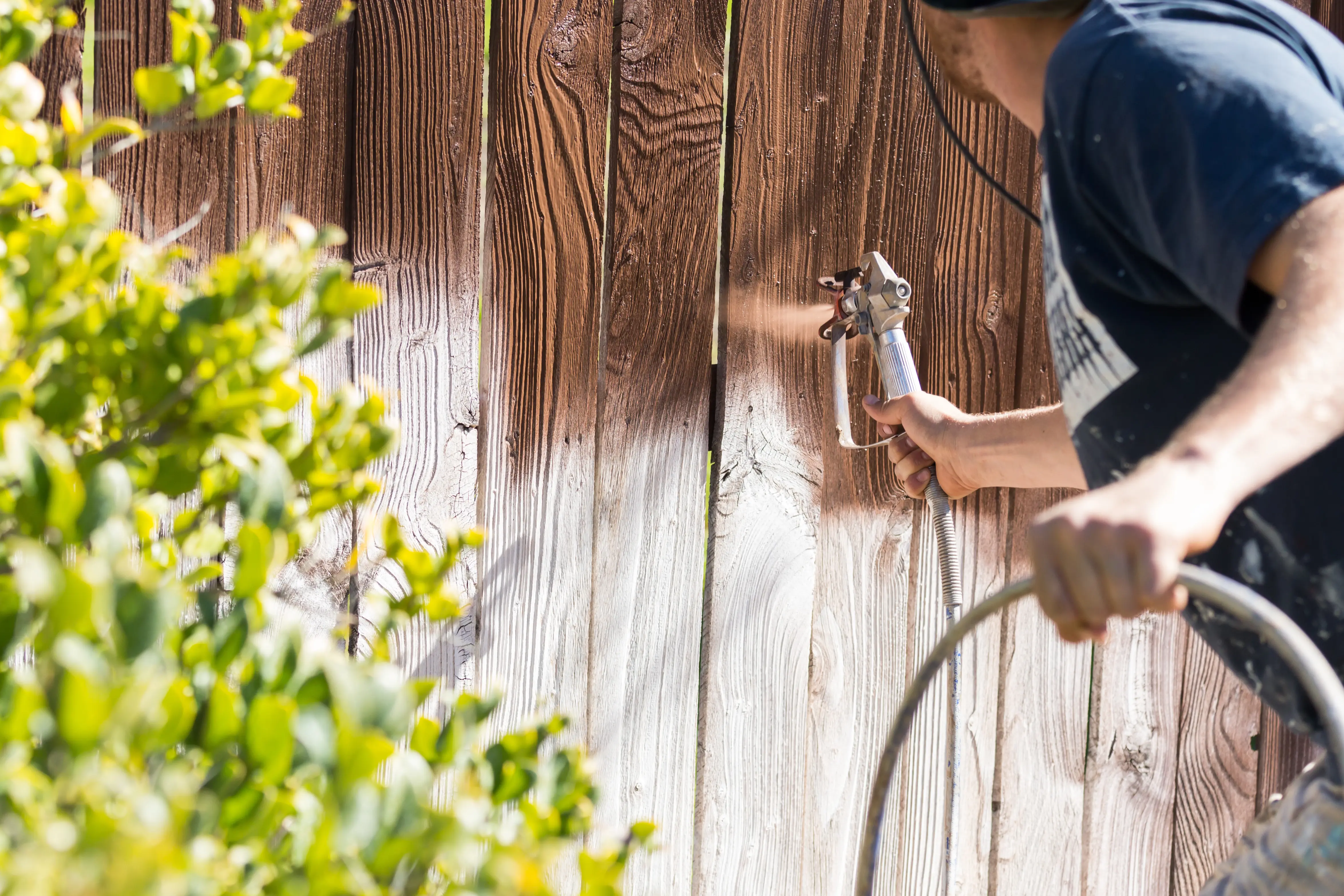
It is the combination of the two numbers that determine how thick the application is. For example, 317 and 517 tips have the same orifice and therefore the same amount of paint leaving the gun. However, the 517 would have a wider fan pattern (10”) and therefore a thinner coating as it is the same amount of paint but dispersed more widely.
A tip with a 0.15 orifice is a great recommendation when you are starting out as it is suitable for a variety of applications.
Selecting The Correct Filter?
The filters that are fitted to your paint spray machine will ensure you achieve an exceptional finish as they essentially filter out the particles to achieve the smoothest paint which won’t need multiple coats as well as preventing blockages in the spray gun. With our QTech range of sprayers there is a triple filtering system.
.webp?width=100&height=100&name=1%20(3).webp)
Suction Filters
Filters the paint at the source.
Buy yours here >
.webp?width=100&height=100&name=2%20(4).webp)
Manifold Filters
Filters the paint in the machine.
Buy yours here >
.webp?width=100&height=100&name=3%20(2).webp)
Gun/ Pencil Filters
Filters the paint in the gun.
Buy yours here >
The first two filters are usually a standard filter for the machine you’re using but the gun/pencil filter will depend on the type of paint you are using. The more viscous the material you are using, the coarser the filter should be.
What Are The Benefits Of A Paint Sprayer?
The paint-sprayer fits into our fast-paced world where we want everything more quickly since these machines can paint a room as quickly as 10 minutes. Speed is not the only benefit of these machines, just take a look at all these advantages the machines boast:
- It creates a smooth, even coat
- Ideal for textured surfaces
- Great coverage even on dark surfaces
- It creates a professional high-quality finish
- It is ideal for quickly completing large paint projects
- The HVLP makes quick work of detailed paint jobs
- Suitable for intensive use (model dependent)
- There is a high transference rate with less paint needed to complete a job
- It is versatile and compatible with a wide range of paints
- It is portable and lightweight
- It has health benefits since the gun is doing the hard work and preventing you from constantly bending down for more paint
- Its speed and efficiency means your productivity will increase and you’ll be able to complete many more jobs.
Of course, with the positives come the negatives and it would be remiss not to mention the disadvantages. With owning a machine you should consider the cost of maintenance and servicing as well as weighing up the initial financial outlay of the machine. Also, whilst spray guns are designed to spray precisely, there may be overspray which of course means careful preparation using masking tape and drop film to ensure all areas are protected.
Discuss Your Requirements With CES Hire
Our expert team is on hand to help you with any queries you have. Whether you:
Have a question about one of our products
Want to find out more about our maintenance services
Or simply need some advice
The CES Hire team can help! All you need to do is fill in the form provided and we will be in touch as soon as possible.
Machine Vs Manual
Whilst there are a great many benefits to using a paint spray machine (see above), many people rely on the traditional methods of painting using a brush since this is all they’ve had exposure to. There are of course still benefits to the traditional manual way such as:
- No machine maintenance costs
- Cheaper paint tools (i.e. no machine cost)
- Potentially less preparation work since you needn’t consider overspray
- Quicker cleaning process
Whilst these benefits are absolutely valid, in terms of the cost, which is perhaps the most off-putting aspect for some, machine application gives long-term financial gain due to increased productivity and therefore opportunity to take on more jobs.
The downsides to sticking with that traditional brush method include...

Much longer application time

Uneven and inconsistent covering

Multiple coats needed

Challenging to cover textured surfaces
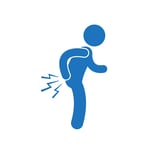
Takes its toll on your body by bending down for more paint
Paint Sprayers At CES
CES stock both QTech and TriTech Airless Paint Sprayers which will suit all decorating jobs. Whether you’re an amateur DIY-er and looking to makeover your kitchen or a professional decorator who is contracted to finish off several new build properties, we have a machine to suit your needs. The Qtech QT190 is a fantastic machine if you are just starting out and will make all those occasional DIY jobs a lot quicker and easier to complete. The QT190 is suitable for more infrequent use e.g.: Approx once a week for small to medium tasks. We also supply heavier-duty machines such as a Tritech T9 which can be used 24/7 for the professional painter.
Explore more of our Airless Paint Spray and HVLP machines here >
Popular Spray Paint Machine Products
What Is An HVLP Machine?
In a nutshell, the HVLP stands for High Volume, low pressure. This compact and lightweight machine is the ideal machine for the more fiddly and intricate jobs, such as:
→ Cornices
→ Balustrades
→ Trims
→ Furniture
→ Kitchen Cabinetry
→ Stair Rails
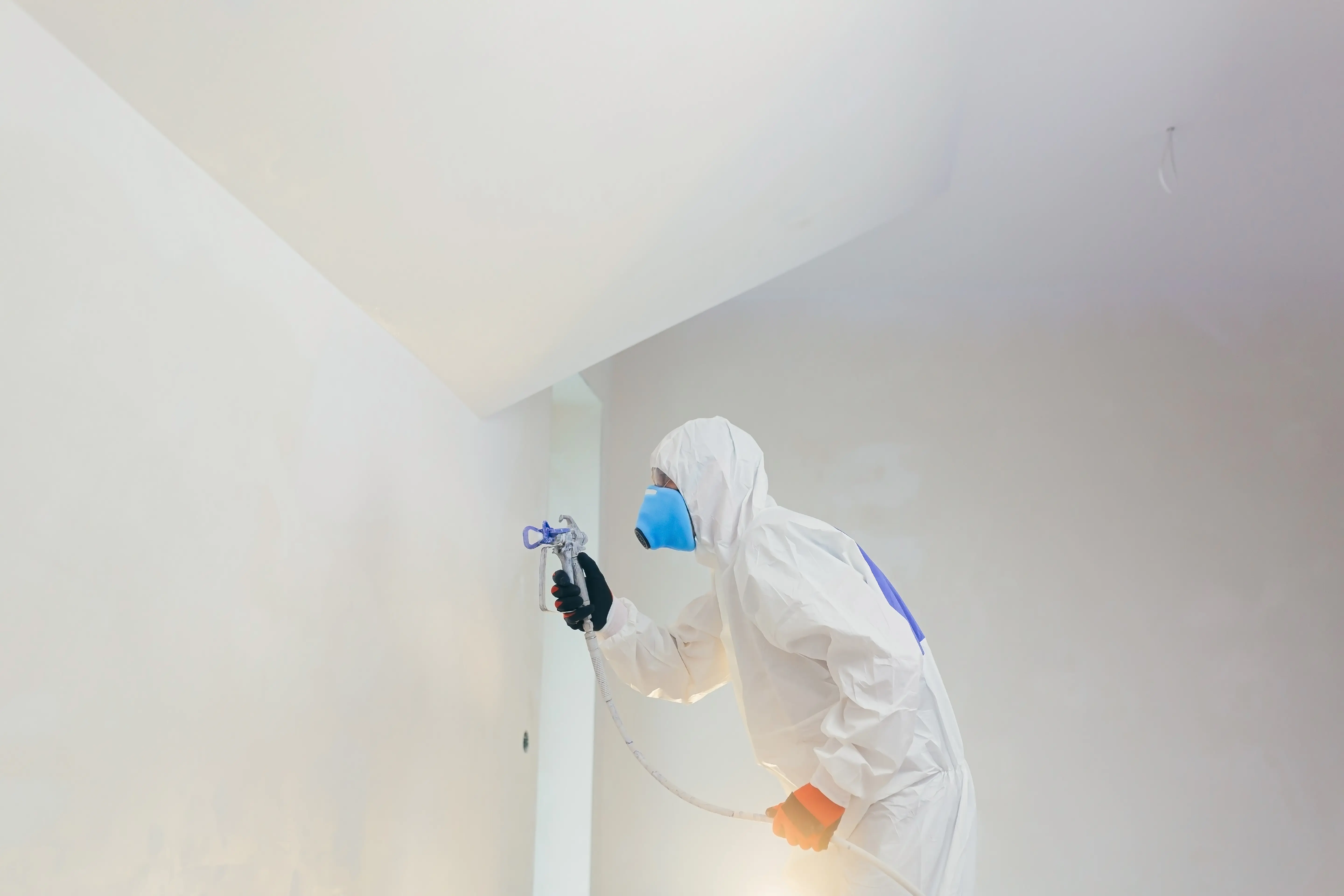
It is an ideal machine to begin your spray journey; not only is it a budget-friendly option but it also is easy to use and simple to set up and clean down. The HVLP sprays with precision to apply thicker material as well as achieve a smooth coverage, even coating and flawless finish. As with many of the paint spray machines, speed is the name of the game and the HVLPs greatest claim is that it can spray a door in 2 minutes.
The machine works at a low pressure of around 10psi and emits a high volume of 100cfm. It is designed with a turbine which delivers a constant flow of warm, dry air which ensures constant and even paint atomisation. Due to there being more air than pressure, more paint is emitted from the gun to the surfaces. The machine also boasts a superb transfer rate of approximately 90-95% meaning much less overspray and less chance of you looking like a dalmatian! See how the HVLP got on with spraying up built cabinetry here >
How Much Does A Paint Sprayer Cost?
As with all of the machines available at CES Hire, there are machines available to suit your budget. The QTech HVLP range is great for those starting out in spray painting and is also ideal for painting details or more intricate areas. These machines can be purchased for as little as £605* (QTech 3 stage HVLP Turbine). The Qtech QT range is also particularly affordable and their most basic model, the QT190 starts from just £695*. Finally, we also stock Tritech machines which are designed for heavy-duty painting (these machines are designed for 24/7 professional painting). The smallest Tritech model (T5) starts from £1,650*.
*All prices are correct as of October 2022 and exclude VAT and delivery costs.
How To Use A Paint Sprayer?
Using a paint sprayer is all about perfecting your technique and practice is crucial. If you are new to airless paint sprayers, find a scrap of card to practise on to achieve the correct spray pattern before you transfer to the wall. These machines are very simple to use and it’s more about getting the technique right when you spray. Take a look at our top tips for using the airless paint sprayer:
.webp?width=100&height=100&name=1%20(3).webp)
If you're spraying from side to side (left to right), select a vertical spray pattern and if spraying up and down choose a horizontal pattern.
.webp?width=100&height=100&name=2%20(4).webp)
Maintain a consistent distance (10-25cm) away from the surface, always working within comfortable reach. If the gun is too close, you'll notice runs/drips as the paint is too concentrated. Equally, using the gun at a distance will give overspray and fading.
.webp?width=100&height=100&name=3%20(2).webp)
Use long continuous passes with the spray gun aiming straight at a 90-degree angle from the wall or surface. It is vital not to spray at an angle or swing the gun as you will create an uneven finish with fading or overspray. Remember to flex your wrist, not the gun!
.webp?width=100&height=100&name=4%20(2).webp)
Ensure you trigger the spray gun after beginning each stroke and release before ending your stroke. Using this technique will apply paint more evenly preventing streaks and build up of material Remember your arm should be moving before you trigger the gun.
.webp?width=100&height=100&name=5%20(3).webp)
Make sure that each pass overlaps by 30-50%. A good rule of thumb is to aim the spray tip at the edge of the last stroke to get that overlap. This will seamlessly blend the paint and prevent a striped appearance.
We have further information about the factors to consider when using an airless spray paint machine over on our blog. Read more here >
Compatible Paints
With hundreds of spray tips available you can paint using a whole variety of paints. Changing a spray tip is as simple as click off/on so you can easily switch your paint choice (though do bear in mind to clean the machine to flush out old paint first). Larger tips will generally work with more viscous paints whereas the smaller tips are compatible with thinner consistency products. Remember to avoid paints containing granular solids (these can be used in fillers and for certain colour paints). As ever, it is vital you check the paint specification to ensure it is compatible with a spray machine before you go ahead and spray.
In general, these are the paints that can be used in paint spray machines:
Emulsion, latex paints, adhesives and sealantsWater and solvent-based paints, varnishes, lacquers, oils and separating agents
Primers and fillers
Fireproofing and corrosion protection paints
Masonry paint, roof linings, floor coatings and silicon resin paint
Synthetic resin-based paints, PVC paints and 2-K lacquers
What Can I Paint With My Paint Sprayer?
Paint Sprayers are incredibly versatile machines and can paint a wide range of surfaces including...

Walls & Ceilings
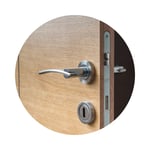
Doors & Windows

Wood & Steel Constructions
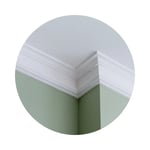
Detailed Cornicing, Coving & Skirting
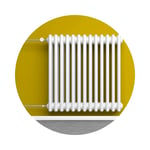
Radiators
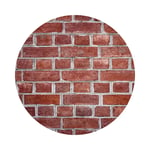
Brickwork
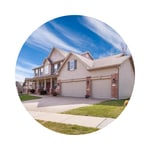
Exteriors

Roof Lining
How Long Does It Take To Paint A Room?
Speed is one of the biggest draws when it comes to airless paint spray machines. Of course this is not a completely straightforward question and there are many variables that can affect the time it takes to spray paint a room. Firstly you should take into consideration preparation time as well as factoring in room size, the decorators experience and even choice of tip size. As a rough answer to this question, with an average size room, a roller could take 1-2 hours whereas a paint spray machine can take around 10 minutes. It is also worth remembering that often only one coat is needed with a spray machine since one slow pass with your machine is equivalent to 3-4 passes with a brush or roller. Don’t forget sprayed paint is generally much quicker to dry and is much easier to use when tackling awkward edges and corners.
Achieving The Correct Spray Pattern
Achieving the perfect spray pattern is a combination of selecting the correct spray tip size and perfecting your technique which comes with practice. Use scraps of card to practise with paint and perfect your spray pattern. You’re looking for a consistent spray pattern with no tailing. Tailing is when two distinctive lines appear on the edge of your spray pattern which leads to stripy-looking paint. The edges of your paint should be soft to seamlessly blend between one pass and another. If you are experiencing tailing during your practice check these three elements...
- Check the pressure setting and increase the pressure to supply the gun with more paint.
- Dilute the paint. Viscosity is crucial for effective paint spraying.
- Inspect the spray tip and nozzle size looking for wear and tear that may mean it needs replacing (read more about tip maintenance here)
Regarding the spray tip, remember the 3 digit number gives you all the information you need to know regarding the spray pattern. The first number gives you the fan width size when the number is doubled e.g. 5 becomes a fan width of 10”. The second two numbers indicate the orifice size, the larger the orifice the more paint emitted from the gun and therefore the thicker the coating.
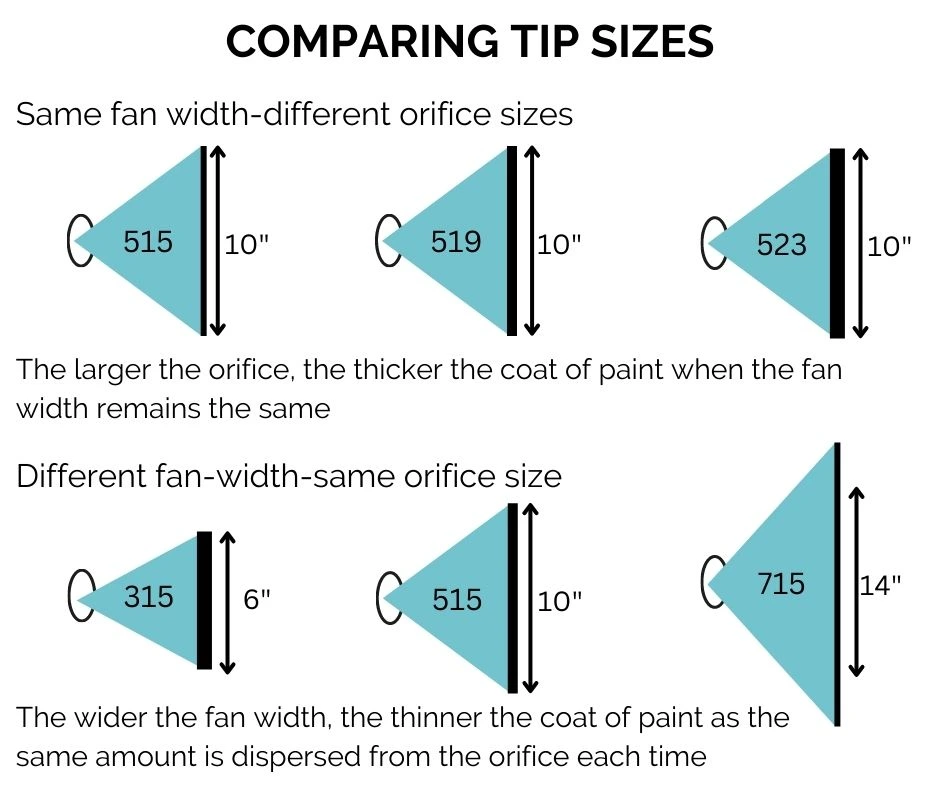
Are Paint Sprayers Messy?
Airless spray paint machines are no messier than using a roller or brush and both require investing time in the pre-paint preparation to avoid a big mess once you’re finished. Both roller and sprayer create overspray, we’ve all found ourselves speckled in paint are a vigorous roller job and equally the paint spray machine with create some overspray. With a brush or roller, you are more likely to find mess caused by drips and with a machine, you may find more of a mist. If you prepare properly any overspray or drips can be easily cleaned up and still leave you with the perfect professional finish.
Preparing To Spray
As we’ve just mentioned, overspray can occur whether painting manually or with a machine so it is vital to prepare the space you are working in. Whilst masking up can take time, it is worth doing this properly as it will benefit you in the ease to which you can then paint and the speed of the clean-up process. Always cover anything you don’t want to get splattered in paint. We would recommend a pre-masked drop film which is quick and easy to apply and covers large areas like furniture, walls or carpets. Window protection is also great for smooth surfaces such as windows and it adheres straight to the surface it is placed on. Of course, painter's masking tape is key for masking up those details such as skirting boards, coving and other details. Take a look at our tips for masking up for the perfect finish:
- Invest in quality tape. The quality is reflected in the price as painters’ tape is more than bog-standard masking tape. However, you get what you pay for since painters’ tape has innovative technology that creates that barrier to prevent the paint from seeping underneath.
- Choose the correct tape. Many brands, such as Deltec have a range of tapes for a variety of surfaces including sensitive or extreme So, whether you’re working with wallpaper, fresh paint, rough or moist surfaces there will be a tape to suit the job.
- Remove any dust and dirt from the surface you are applying the tape to. This will ensure maximum adhesion and less chance of paint bleed.
Safety & PPE
It is a legal requirement to wear PPE when spraying paint. At CES we would recommend the following:
→ Respiratory mask
→ Gloves
→ Safety Goggles
→ Long-sleeved clothing and safety boots
Spray guns can be exceptionally dangerous if not handled in the correct way. Remember that the gun is pushing out over 3000PSI which upon hitting skin/body parts will puncture it just as a needle would. This can cause serious injury or even be fatal so you must immediately go to the hospital if paint is injected into the body via the spray gun. Of course machines are fitted with safety precautions; the spray gun is supplied with a tip guard which should always be fitted to prevent injury. Paint can also emit toxic fumes therefore a respiratory mask is key to prevent inhalation of the fumes and any overspray. It is important to ventilate the room you are working in as well as taking regular breaks so that you don’t become lightheaded and dizzy.
Cleaning & Maintenance
Looking After Your Spray Tip
Tritech spray tips are made from hard tungsten carbide which measures 93 on the Rockwell Scale of Hardness (for context diamonds measure 100). Despite being designed from the strongest materials, spray tips will still wear over time since all paints contain abrasive components. You will get around 300-600 litres of paint sprayed using one spray tip before it needs replacing. A new tip will create a spray pattern with a soft and thinner coated edge. As the tip wears, the edge becomes more defined, the fan size decreases and you will need more paint for the same coverage. If you are noticing a round spray pattern rather than a narrow one, it is a sign the tip needs replacing. A worn tip means the orifice size increases and the fan will decrease.
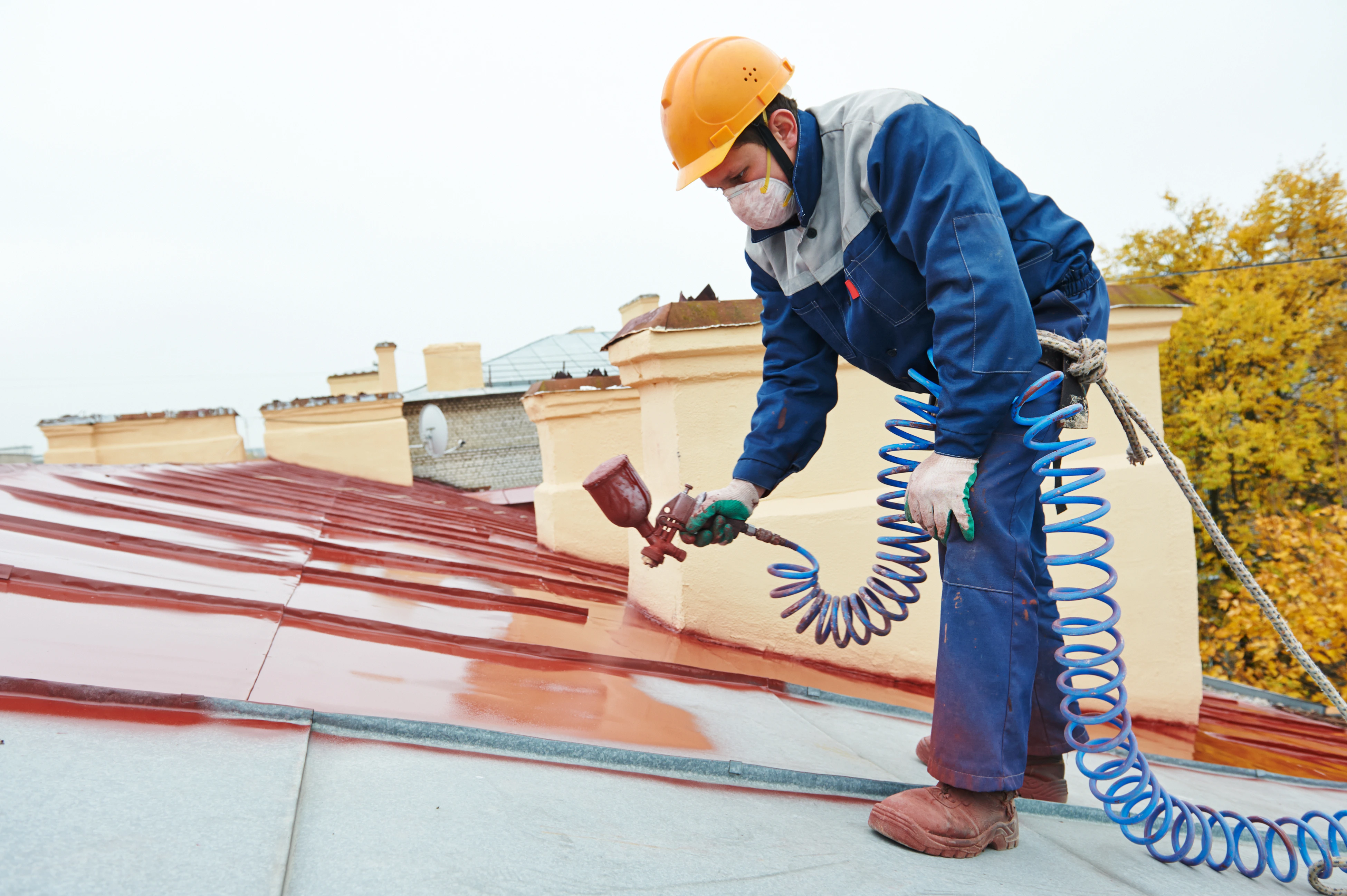
Continuing to work with a worn tip will cost you money since it increases overspray and means you will need to do more passes to cover the surface; that’s a lot of wasted paint and increased labour!
Machine Hire
Machine hires are a great way to begin your journey into airless spray paint machines. A hire means there will be less of a financial outlay and you can test the waters and see which machine works for you. Machines such as a top of the range Tritech T7 can cost from as little as £185 per week (prices correct as of October 2022 and exclude VAT and delivery).
Contact CES Hire
If you have any further questions about airless paint sprayers, feel free to get in touch and ask away! Our friendly team of experts would be more than happy to help you.
You can get in touch via our contact us form, send us an email, or call us on 01494 715472.




